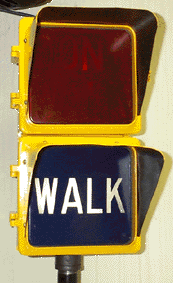Marbelite Traffic
Signals
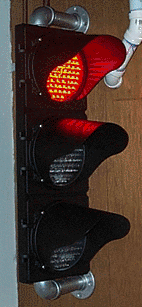 |
This signal had its reflectors, light bulbs and lenses replaced with LED modules. LED's are supposed to last longer and use less energy than traditional bulbs. There are different types of LED modules. You can actually see the LED's which appear as the bright dots in these modules made by Diallight. Some LED's have a screened look like traditional lenses. To see a front view, move your mouse over the picture. Click on the picture to see the inside of the signal. | ||
| This 4 way was made by Marbelite. It is a very sharp looking signal! It has unusual visors that look like a combination of tunnel and cutaway visors. Many signal collectors refer to these visors as tunnaway visors. The lenses and reflectors are all glass. The lenses look similar to large bead smiley lenses used by Crouse Hinds, except obviously, no smile. There is a logo on the lens. It is a capital M with a lightening bolt going through it. These are known as "Long Bolt" lenses. You can put the animation into flash mode by placing your mouse on the picture. To read a little recent history of this signal click here. |
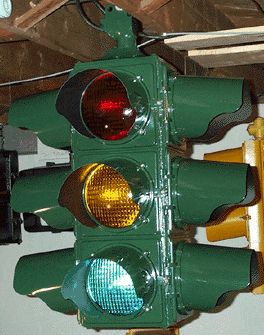
|
||
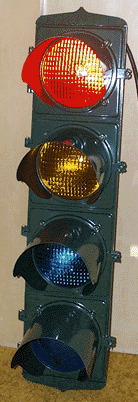
|
Here is the cousin to the 4 way above. It has the same lenses, reflectors and visors. What really makes this signal stand out is the end plates that resemble Crouse Hinds Art Deco end plates. Hence I call this signal a Marb Deco. What is strange though is that the Eagle and Crouse Hinds signals that used these type of end plates had signal sections that were open on each end and required the end plates to close the ends of the signal. The Marbelite version used closed sections, so the end plates are not necessary. Marbelite must have decided just to include the end plates to add some style to their signals. | ||
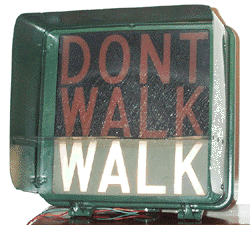
|
This Marbelite pedestrian
signal originally served in New York. It is an incandescent signal and
is very similar in design to ICC
pedestrian signals.
It is known as a MPS-20. |
||
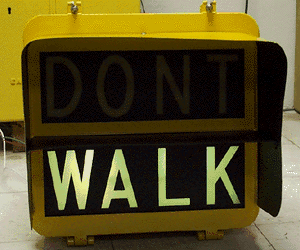
|
This signal is known as a LPS-20. The original reflectors in these signals were made of plastic and the light bulbs would often get too hot for the plastic and make the reflectors brittle or in the worst case, they would even catch on fire! Due to this problem, these signals are very hard to find with original reflectors. The reflectors in this example are reproductions made of metal. | ||
|
Here is an 8 inch signal with a 12 inch enlarging unit made by 3M. With this attachment, the normal lens is replaced with a frosted lens of the same color and the enlarging unit is mounted in place of the standard visor. The main body of this signal is identical to the 8 inch signal at the top of this page. To see detailed
pictures and information about the enlarging unit, please see the |

|
||

|
Here is a Marbelite signal head from the late 60's or early 70's. To see more pics, and some history of this signal, click on the signal. |
|
This is a 9 inch Marbelite pedestrian signal. It has glass lenses with the words embossed on the inside of the lenses. It looks very similar to the CH model R and the Eagle pedestrian signals, but was somewhat harder to find than the others. |
